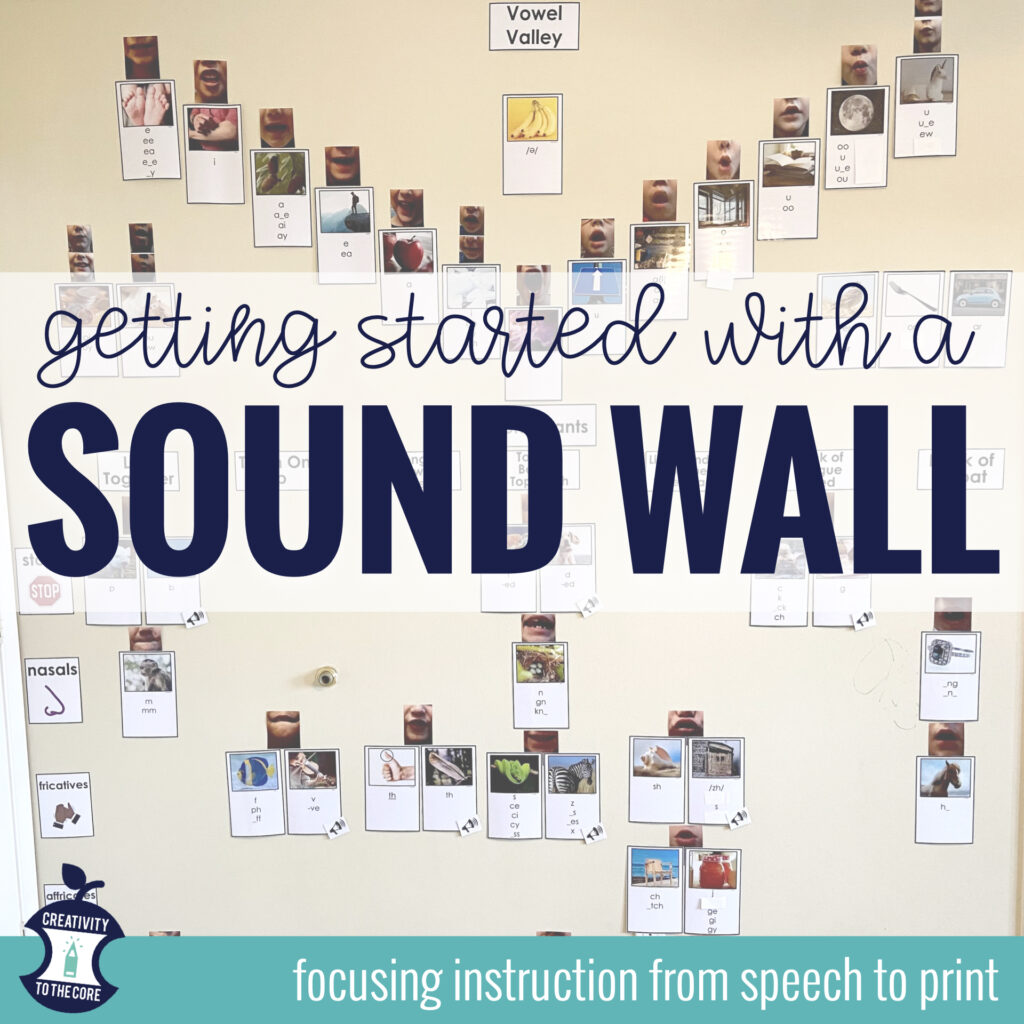
Why use a sound wall?
Babies are born and quickly learn the sounds of their native languages. They are sponges, soaking up the language, recognizing similar sounds, building connections between sounds and words, and eventually speaking. Our brains are wired for spoken language. This is not new. Humans have been speaking since they first existed.
Contrary to popular belief, our brains are not wired to read. There is no part of the brain that has the sole function of reading text. There is, however, a part of the brain that has the sole function of producing speech. When children or adults learn to read, they are quite literally rewiring the brain. Humans utilize many parts of the brain when learning to read. The connections between these parts (orthographic processor, phonological processor, meaning processor, and visual processor) have to be created, strengthened, and repeatedly used to achieve automaticity.
We can facilitate a learner’s early reading and writing journey by approaching the code from their point of view (speech) and leading them toward our point of view as a fluent reader (print). Sound walls help by building upon what students already know (spoken language) when they are acquiring new knowledge.
What is a sound wall?
A sound wall is an interactive reading and writing instructional tool for students. By definition, a sound wall focuses on sound, the 44 phonemes in the English language. Sound walls are created to facilitate the connection from speech (spoken language) to print (reading and writing). A sound wall has two main components – a vowel wall (often referred to as a vowel valley) and a consonant wall. They focus student attention to each specific speech sound, rather than each of the 26 letters, and how that sound is formed by the lips, tongue, or teeth.
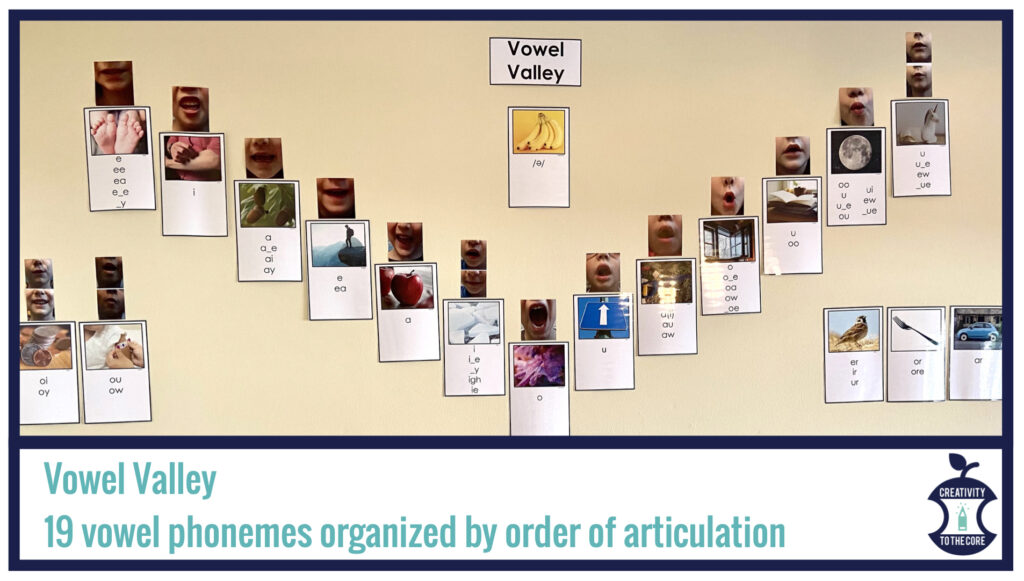
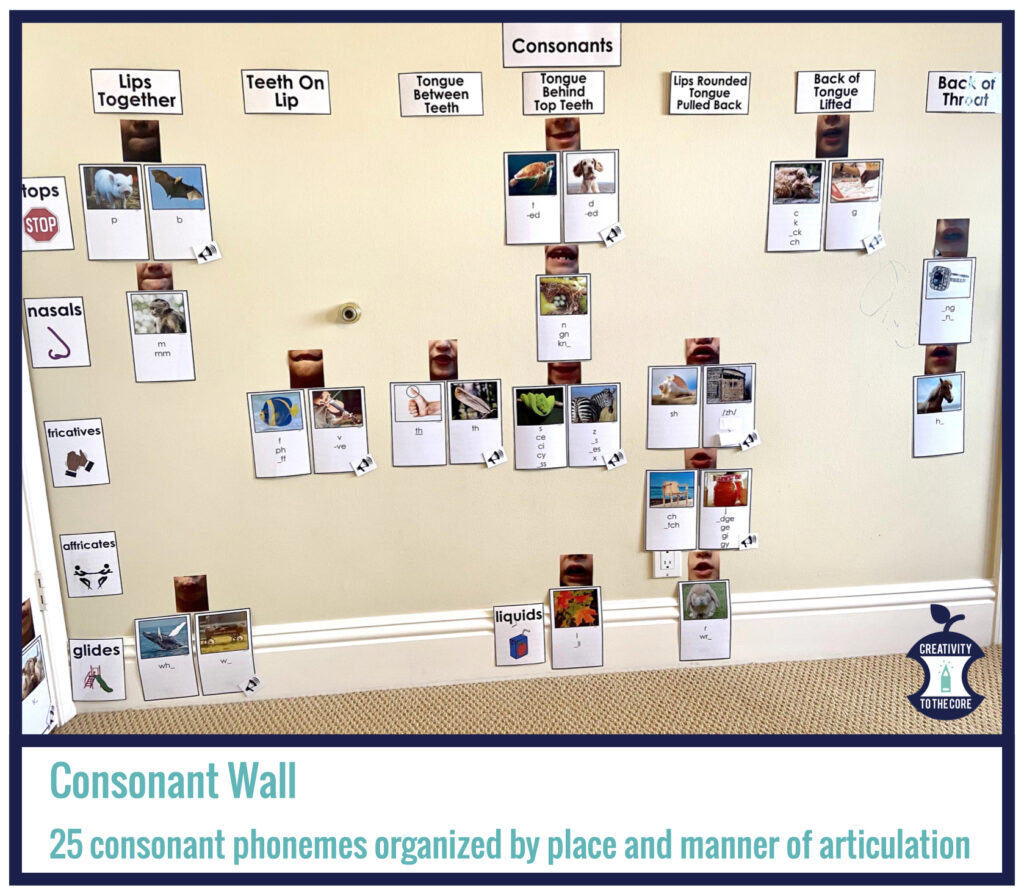
Students are directed to first focus on what words sound like because that is what students already know. Sound cards are organized by the sound’s category (vowel or consonant, plus consonant types) and how it is articulated. The place of articulation (where the sound is produced) and the manner articulation (how the sound is produced) are used to determine how sound wall cards are organized and posted for students. Most sound walls have pictures of student mouths or pictures of mouth clipart that show students what the mouth looks like when producing that sound. These pictures are placed above each of the sound cards. Students are encouraged to feel their mouths, look in mirrors, and focus on the vocal cords and air flow in order to determine sounds and their spellings. Commonly used graphemes (spellings) are listed beneath each sound in the frequency that they occur in English. For example, on the /oi/ phoneme card, the grapheme OI will be listed first. Then the grapheme, OY will be listed below the OI. This shows students that the most likely spelling is OI, followed by the next likely spelling OY. Learners use this as a support along with the core instruction in phonemic awareness and phonics.
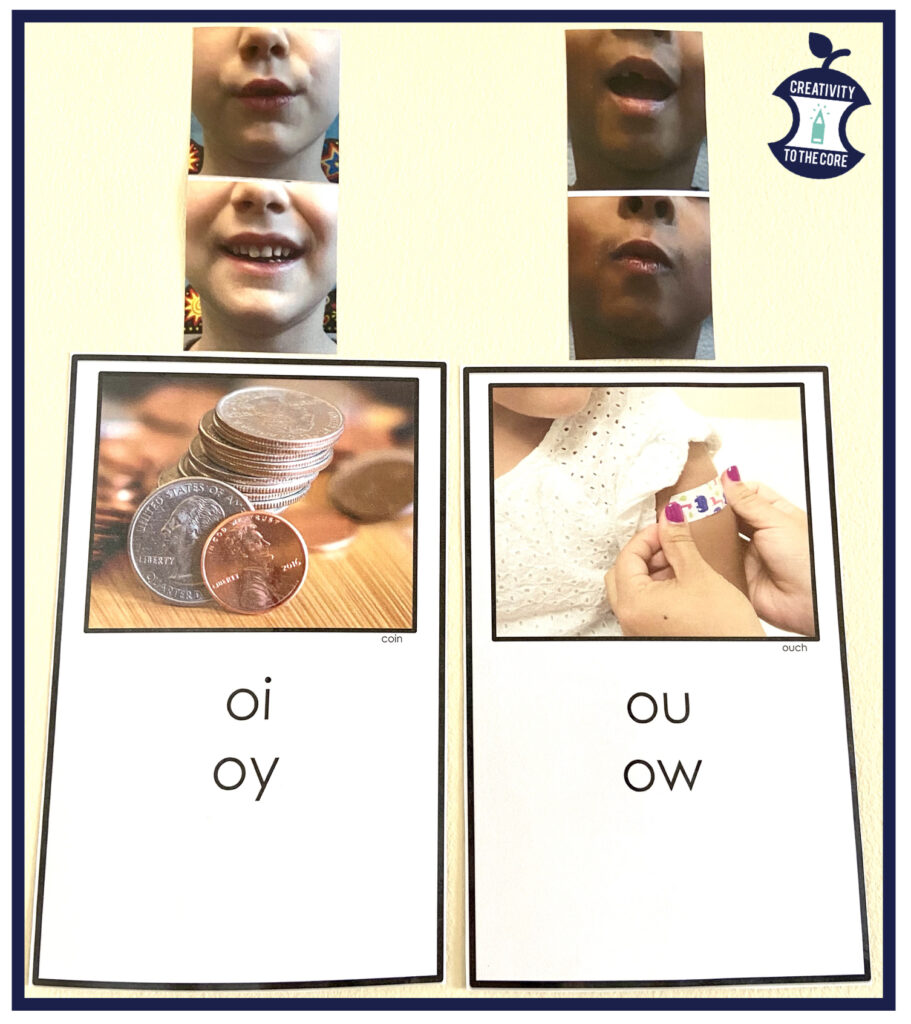
What is not a sound wall?
Phonics posters, grapheme (common letter combinations in English that spell a specific sound) walls, and word walls are not sound walls. Sound walls focus first on the phonemes (sounds), and then on the graphemes (spellings that represent that sound). Sound walls include all 44 phonemes. If using phonics posters or grapheme walls, that is a wonderful support for students as well. Just remember, that it is not a sound wall if it does not represent all 44 sounds in English.
A Common Comparison
Teachers and parents of elementary age students are typically familiar with word walls. Word walls are common in K-5 classrooms around the country, and the world! Word walls are a student support posted on a classroom wall or placed in a folder. Word walls typically are organized in alphabetical order from A to Z, the 26 letters of the alphabet. Many times, high frequency words and irregular words (often referred to as “sight words”) are placed on the word wall. Words are posted under their initial letter. For example, the word “she” would be placed under letter S. Therefore, words are placed based on their visual first letter, or what you actually see first in the word. Students are encouraged to use the word wall as a resource to help them spell these words.
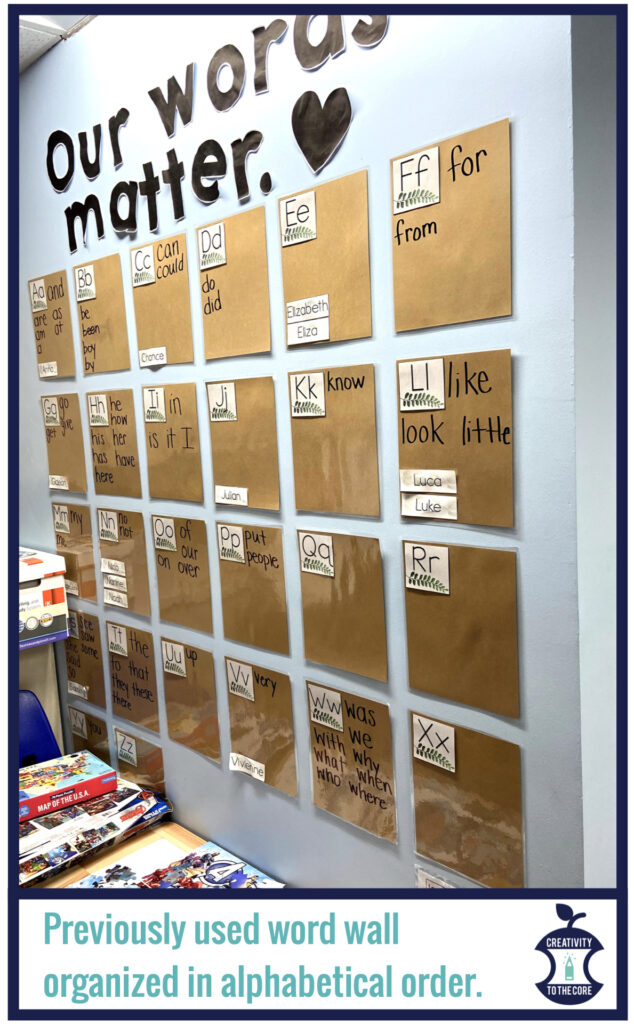
Many would see sound walls as another option instead of or in addition to a word wall. I personally do not use a word wall any longer. However, I do see how a word wall may be helpful with more of a vocabulary focus for math, social studies, or science content.
The Common Predicament
Because word walls are organized from A-Z, there are often words posted under a letter that do not match with the word’s initial sound. For example, the word “she” is placed under the letter S on a word wall. Visually, there is an S at the beginning. However, “she” does not begin with the sound /s/…. “she” begins with the sound /sh/. The SH digraph consists of two letters that make one brand new sound. An emerging writer will walk up to the word wall, looking for this word and saying it aloud: “she”. No matter how slowly they say the word or how many times they say it, they will never hear /s/ at the beginning.
Think about this: If the learner does not yet know how to spell the word, then they probably will not know the initial letter either. How will this learner find the word they are looking for? How will they write the word in their story?
The same scenario happens with hundreds of other words in the English language. English has 44 phonemes (sounds). Forty-four. Yet, the English alphabet only has 26 letters. How can we expect all of the words to fit within those 26 letters? We cannot. Think about these words. Where would you place them on a word wall? Where would you place them on a sound wall? What would students be thinking of if they were speaking these words aloud while searching for them on a classroom wall?
that, chat, photo, she, gnat, out, autumn, of, arm, oil, about
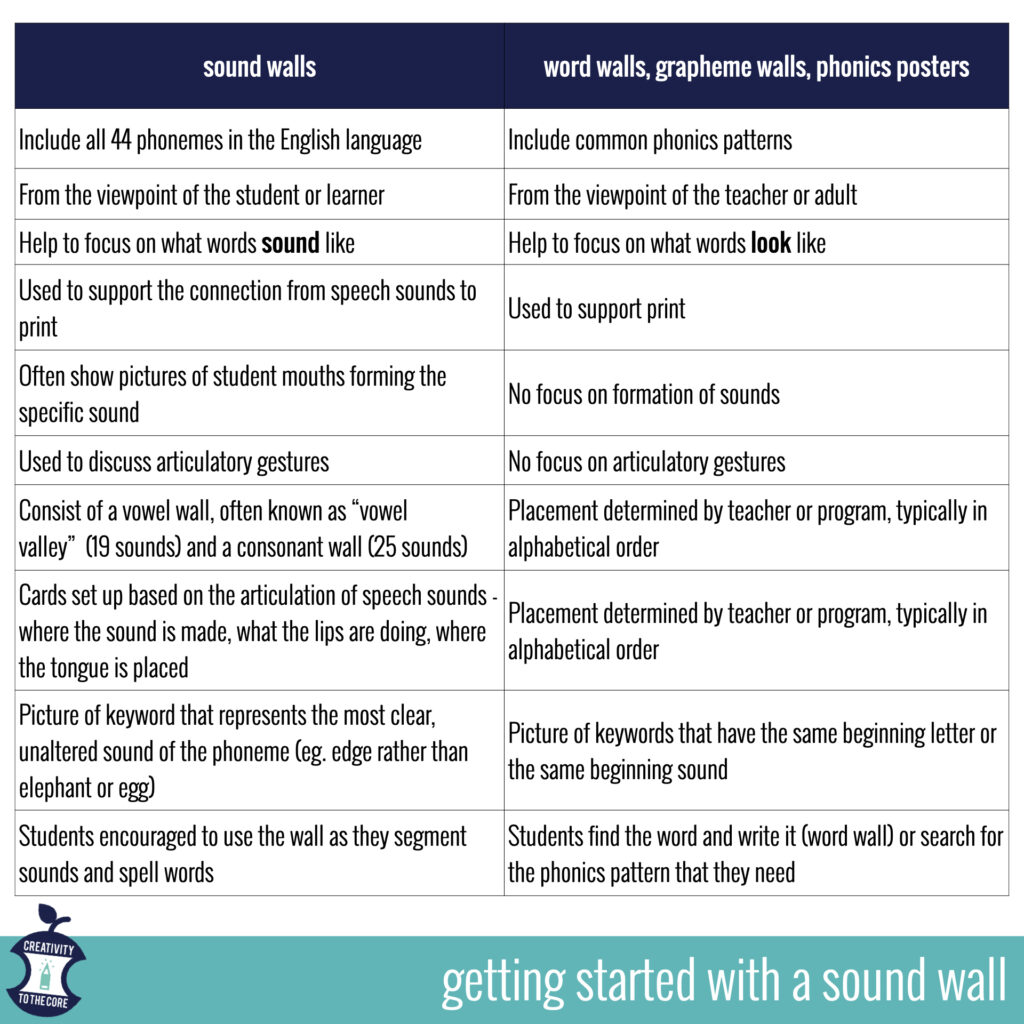
A Personal Connection
This is the situation that radically transformed my thought process. Word walls had always been a requirement at each school I’ve worked in. Requirement. As in, “We are coming in with the beginning of the year checklist, and one of the items is WORD WALL”.
About a year ago, I first heard a presenter say something like “Why would you put ‘she’ under S?”. I quickly made a decision to research this more. I was determined to have a classroom support that would be continuously used as a tool in reading and writing instruction and practice. I was determined not to have another “resource” that became wallpaper as students interacted with it less and less.
Fast forward to this year. I have used a sound wall for eight months so far in my first and second grade classroom. It has transformed the way I teach. I have the knowledge to instruct students in the phonemes of our language. Because of using a sound wall and doing my own research to fully understand its components, I am equipped to help my students make sense of our language.
It has also strengthened the way my students interact with words. They now have the knowledge and the tools to read, spell, and write confidently. They aren’t searching for words that are posted. Rather, they are using what they know about the individual sounds in the target word, segmenting them, and determining how to spell each sound. What a way to build self-confidence. You CAN do this. Use your tools to help you.
Never before have I had a student explain the complete reasoning behind why a vowel changes slightly when it’s coarticulated (pronounced together) with a letter like N or M. Now, my students are eager to explain the nasalization of the vowel while pointing to the sound wall. They say /n/, /m/, and /ng/ are nasal sounds and that the sound is produced by air passing through the nose. Therefore, when a vowel is beside a nasal sound, the sound of the vowel also gets pulled into the nose a bit as we get ready to say the sound of the nasal consonant /n/, /m/, /ng/. I don’t think I even knew this last year. And I would never have expected a student to describe it. They are also able to explain the many ways to spell the /j/ sound, with the letter J or with the letter G. They can tell you which is most common and which is used when. I could go on and on…
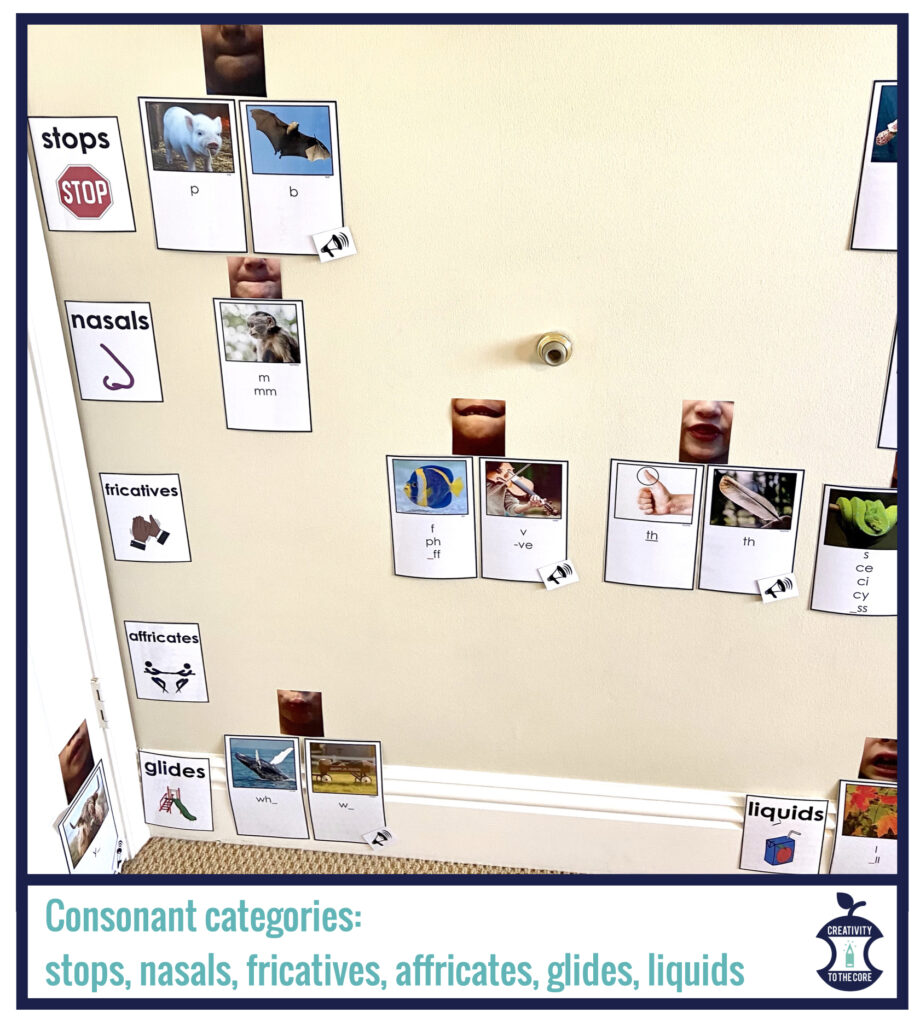
Student knowledge of speech sounds and how they are written in English has improved. Reading has improved. Spelling has significantly improved. Confidence has increased exponentially.
Of course, I cannot say that the sound wall caused all of this to happen. Yes, I’m doing tons of other things throughout the day and teaching many different foundational skills. However, I can tell you that using the sound wall has literally changed how I approach teaching everything (phonemic awareness, phonics, spelling, high frequency words, and writing) and it has changed the way my students approach words.
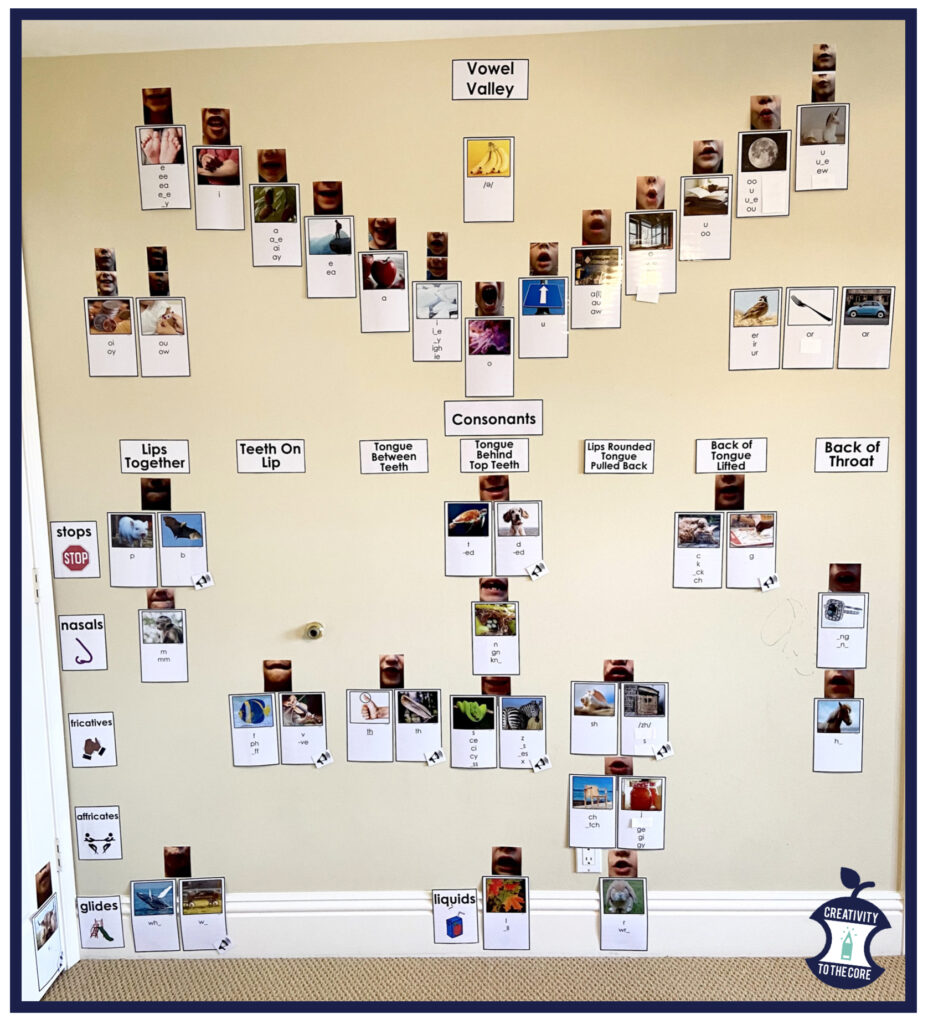
If you are interested in learning more about sound walls, I encourage you to dig into these resources.
Sound Wall Wakelet – a collection of resources about sound walls put together by Pam Kastner from PaTTAN. Such a wealth of information, PD, and free documents to help you on your journey.
Tools4Reading – created by international sound wall expert Mary Dahlgren. Mary Dahlgren’s KidLips products are perfect for building your sound wall. The back of each sound card includes valuable information about the phoneme, how and where it’s articulated, and how it is commonly spelled. Highly Recommend.
Creativity to the Core on Instagram – See highlight labeled “Sound Walls” as well as various posted videos.
Sound Wall with Real Photos – Creativity to the Core on TpT
Feel free to reach out if you have any questions! You can leave a comment below or contact me directly on Instagram @creativitytothecore or by email at creativitytothecore@gmail.com.


Well written! So helpful!
Where do you put your high frequency words on your sound walls? Do you put them under the beginning sound?
Thanks,
Great question! You may choose to put high frequency words under the sound wall cards, you may also choose not to. I have personally found that it’s not necessary if you are simultaneously teaching HFW reading and spelling by decoding rather than memorization. If students have difficulty spelling a few HFW (often irregular HFW), I will write it large on a sheet of printer paper and place it on the wall, separate from our sound wall. However, MANY people do list their HFW underneath. Both options are appropriate. If you DO choose to put HFW on a sound wall, you definitely put them under the beginning sound. Keep in mind that this does not always match up with the initial letter – “one” would be placed under /w/ because as students are searching the sound wall for that /w/ sound, they will then find “one” beneath it. Putting the words under the beginning sound allows students to quickly find what they are looking for.
How do you know what order to teach the phonemes & graphemes?
A sound wall is an instructional tool to use with your curriculum scope and sequence. You explicitly teach one phoneme at a time, and one grapheme at a time. For example: Long e /E/ can be spelled many ways, but you do not expose students to all of these at once. Start with the most frequently seen (most common) grapheme. Typically, these will be the first spelling shown on a sound wall card.
If you do not have a scope and sequence, you can grab one for free online. Here are a few recommended:
West Virginia Phonics – Click “Login” and create an account. You will have access for free.
Orton Gillingham Scope and Sequence
Keys to Literacy
Do you put up the all the vowel valley and consonant wall at one time or as you introduce the sounds?
I recommend putting it all up but covering the spellings with post its. Introduce the sounds (without discussing spellings) in groups of a few per day at the beginning of the school year.
Is a sound wall still appropriate to put up in my 3rd grade ELA classroom? (First year teaching 3rd here)
Yes! Rather than thinking of it as grade specific, think of it as “What are my student needs?”. If students need help with spelling and using phonics patterns accurately, then this will be a scaffold for them.